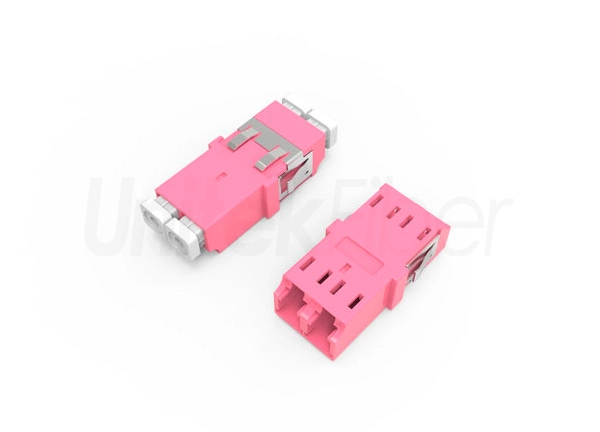
The optical access network applies optical fiber as the main transmission medium to replace the traditional twisted pair and realize the information transmission function of the access network. It is connected with the service node through the optical line terminal (OLT) and the user through the optical network unit (ONU). The optical access network consists of remote equipment——optical network unit and local equipment optical——line terminal, which are connected by transmission equipment. The main components of the system are OLT and remote ONU. They complete the conversion of signaling protocol from service node interface (SNI) to user network interface (UNI) in the whole access network. The access equipment itself also has the networking ability, which can form a variety of network topologies. At the same time, the access equipment also has the functions of local maintenance and remote centralized monitoring. Through transparent optical transmission, a maintenance management network is formed and integrated into the network management center for unified management through the corresponding network management protocol. In the optical access network, because the optical signal is transmitted on the optical fiber, it needs to be transmitted on the optical fiber after the electrical signal is converted into the optical signal in the switching office. On the user side, the optical network unit (ONU) is used for photoelectric conversion to restore the electrical signal and then they could be sent to the user equipment. According to the location where the optical fiber reaches, there are FTTC, FTTB, FTTO and FTTH. The system is divided into AON (active optical network) and PON (passive optical network).
International Telecommunication Union defines the basic structure of optical access network (OAN), as shown in figure (一), which is based on the concept of telecommunication access network. It can be seen from the figure that the optical access network is composed of a series of transmission entities between the service node interface (SNI) and the relevant user network interface (UNI), including line equipment and transmission facilities. Telecom Management Network (TMN) configures and manages access network through Q3 interface. Because the optical access network does not interpret user signaling, it is a transparent transmission network independent of services. Optical access network is generally a point-to-multipoint structure, including optical line terminal, optical distribution network (ODN), optical network unit and adaptation function (AF)
Since the development of communication network, great changes have taken place, from analog to digital, from cable to optical cable, from PDH to SDH, from STM to ATM, from ATM to IP / DWDM…New technologies and systems emerge in endlessly. However, most new technologies and systems are applied in backbone networks, and user access network is still dominated by analog twisted pair technology. Due to the development of social economy and communication technology, simple voice service has been difficult to meet the needs of users and the market, especially with the emergence of optical fiber technology, as well as the increase of users' demand for new services, including broadband image and data services in particular, which has not only brought an impact on the structure of the whole network, but also brought a turnaround for the transformation and update of user access network. In a word, users' demand for broadband integrated services and the rapid development of communication technology have become the two driving forces for the development of access network technology.
The focus of people's attention on access network comes with the growing demand for multimedia services such as voice, data and video. Therefore, access technology with economic and technical advantages should be provided to meet the needs of customers. The main characteristics of access network are: the access network provides carrying capacity for the services it accesses and realizes transparent transmission of services; the access network is transparent for user signaling, and except for some user signaling format conversion, the interface of signaling and service processing is still in the service node; the introduction of access network should not limit the existing access types and services, and the access network shall be connected to the business nodes through a limited number of standardized interfaces; The access network possesses a network management system independent of the service nodes, which connects the TMN through the standardized interface, and the TMN implements the operation, maintenance and management of the access network.
However, considering the advantages of optical fiber, such as large capacity, high speed and small loss, in the long run, optical Fiber-To-The-Home should be the best choice for access network, which is mainly due to the following advantages: large capacity, which is generally above 10GHz; low transmission loss of fiber optical cable even with the longer transmission distance; with good tensile strength, small quality, and relatively small size, fiber optical cable could maximally expand the utilization rate of wiring pipes, and minimize the installation problems as much as possible; because the fiber is made of glass or plastic, which is not conductive, it will not produce electromagnetic wave leakage, electromagnetic interference and noise interference; the fiber has strong resistance to harsh environment; the fiber does not radiate outward, so it is difficult to be eavesdropped with metal sensors; The service life of optical fiber is longer than that of metal equipment.
(1) Inevitable requirements for business development
Users' demand for new broadband services;
The popularization and application of SDH and ATM technology in backbone network;
Require access network to provide broadband transmission channel;
Copper subscriber network' small capacity, narrow frequency band and expanding and digitizing difficulty have become the bottleneck of telecommunication network;
The development direction of telecommunication service is digitalization, integration, broadband, intelligence and personalization of communication network;
The contradiction among the broadband, digitalization and integration of service demand and the underdeveloped access means has become one of the main contradictions in the construction of telecommunication network.
(2) The important links in business cost reducing and economic benefit improving
·Get program-controlled exchanger, and relay transmission of fiber optic cable;
·Analog transmission from telephone office to user (access network);
·Access network is the window of the whole telecommunication network, and also the "last kilometer" of telecommunication network. Its proportion of investment accounts for about 50% of the total investment in telecommunication network;
·The quality of analog transmission is not good; the carried services are limited; and a large amount of non-ferrous metal copper is consumed;
·The price of cable is increasing gradually;
·The price of optical fiber transmission system is decreasing;
·With the availability and practicability of V5 interface, the cost of access system will be further reduced;
·The maintenance cost is much less than that of copper cable;
·To develop access network in an all-round way is also an inevitable requirement of operating cost accounting.
(3) Optimize network structure and deepen the reform of operation and maintenance system of telecommunication network
·Build a access network of new generation, and lay the optical fiber to the nearest place (community, building) from the user;
Split points to connect them with the net, build a great office center, and optimize the network structure;
Centralized maintenance personnel, centralized monitoring and maintenance.
(4) For telecommunication market competition
·The network is available to users, provides a variety of services quickly and wins go-aheadism of market;
·The monopoly of post and telecommunications has been changed;
·Two advantages: one is talent advantage, the other is network advantage;
·It is a strategic measure for the construction and development of telecommunication network to expand and maintain the advantages of network and vigorously develop access network.
According to whether the ODN is composed of active components or passive components, the optical access network is divided into active optical network and passive optical network. For active optical network, it is divided into SDH and PDH. Now it is usually based on SDH active optical network, so active optical network also inherits some inherent advantages of backbone network technology. For example, the transmission capacity of active optical network is large, and the access speed can reach 155.520 Mbit/s or 622.080 Mbit/S; the transmission distance is far, which is more than 70 kilometers without repeater; the bandwidth is easy to expand; network planning and operation enjoy great flexibility; the technology is mature, and both PDH equipment and SDH equipment have been widely used in the backbone network. But in the access network, compared with other access technologies, the cost is still relatively high.
However, the passive optical network is a technology specially developed for access network. Its ODN is composed of passive components. In the process of transmission, the signal does not need to be regenerated and amplified, and is directly transmitted to the user by the passive optical splitter. It is a transparent transmission. Signal processing is completed by the central office and user equipment. Compared with the active optical network, the coverage and transmission distance of passive optical network is smaller and shorter, but because there is no active equipment outdoors, its anti-interference ability and reliability are better and it is greatly easier to install. In addition, except lower price, it also possesses advantages of more convenient installation and maintenance. It, thus, is the most potential technology of the optical access network. Passive optical network includes APON based on ATM, EPON based on Ethernet, GPON based on ATM and takes IP requirements into account as much as possible. Compared with the active optical network technology, the passive optical network technology is used for access network, and its equipment cost and maintenance and operation cost are relatively low. Therefore, it is generally optimistic in high-performance access technology, and recently is also very concerned in China. so, It is decided to choose EPON in the passive optical network.
PON is a point-to-point transmission system. The downlink of it employs broadcast mode, while the uplink uses TDMA mode. Node equipment is not necessary at the optical branch point, and only a simple optical splitter needs to be installed. Its topology is decided by the structure of ODN. Generally, ODN has four basic topologies: single star, multi-star (tree), bus type and ring type.
Selection of FTTX optical access network equipment
Optical access network includes optical line terminal (OLT), optical distribution network (ODN), optical network unit (ONU) and adaptation function (AF). Among them, OLT provides OAN with the interface with the central office equipment for the network side, completing the photoelectric conversion; at the same time, it provides the optical interface with the ODN and various means to transmit various services. The internal OLT consists of the core network, service layer and public layer. There are mainly ports in service layer, supporting multiple services; the core layer provides cross connection, multiplexing and transmission; the public layer provides power supply, maintenance and management functions. The existence of OLT can reduce the tight coupling of the physical interface, bearing means, networking form and equipment management between the upper layer network and the access side equipment, and can provide a unified management interface for the optical access network. Generally, OLT can be set at the local exchanger interface or at the remote end. It can be a physical independent device or integrated with other devices in one device.
The planning of OLT coverage area mainly includes two parts, that is, determining the optimal coverage distance of OLT and selecting the location of OLT coverage equipment. The selection of optimal coverage distance of OLT equipment mainly involves two factors: physical distance of equipment transmission and economic radius of equipment networking. With the calculation of optical channel loss, it can be determined that the physical transmission distance of OLT can reach 10-20km. Therefore, the limited coverage distance of OLT equipment networking in urban area mainly comes from cost pressure. Under the price system with certain user density and related resources, there is an optimal economic coverage radius for optical access network, and corresponding minimum future investment. The access network planning and design can be based on the factors such as the user density, business demand and initial investment scale. Therefore, parameters can be determined according to the project experience and local market price, and the user density ρ of each region can be based on FTTB.



